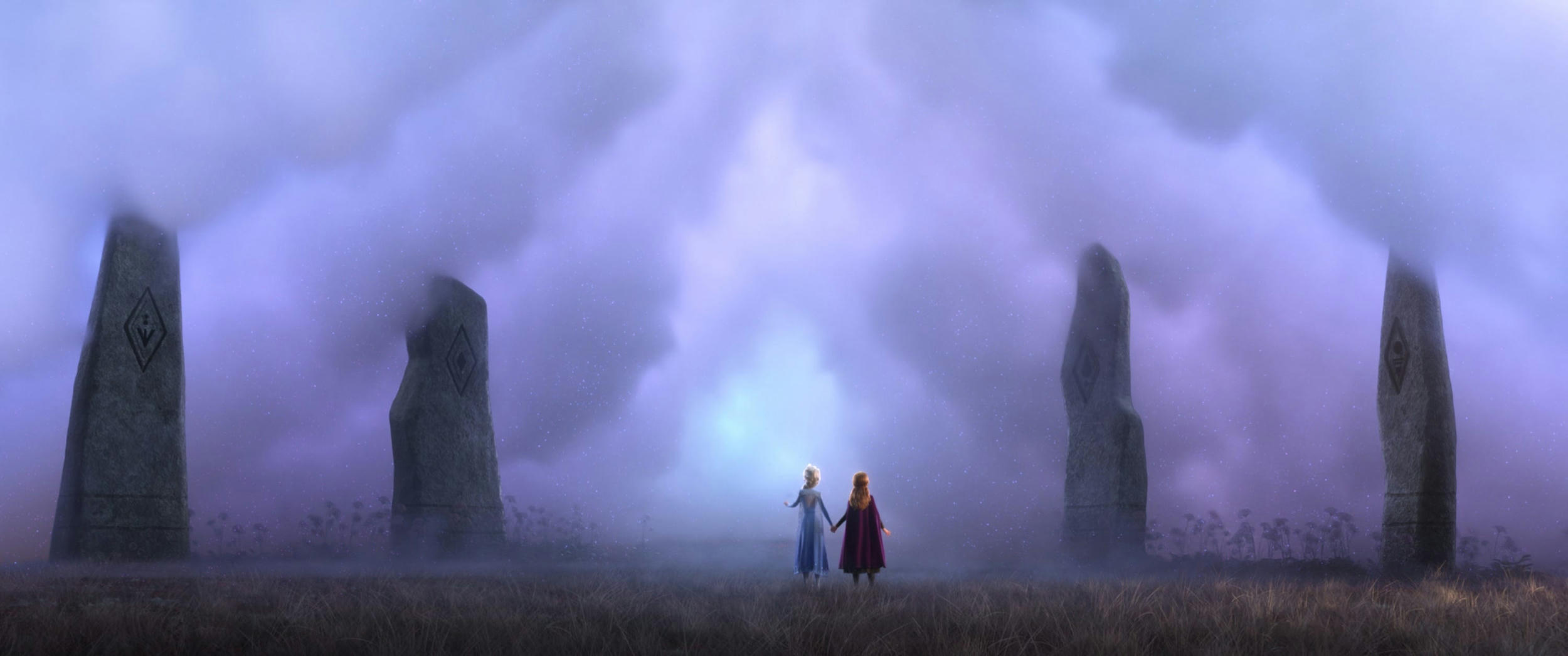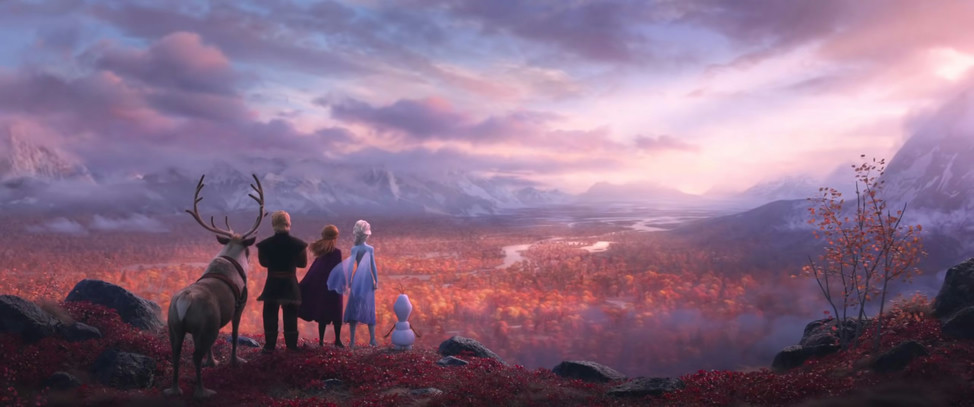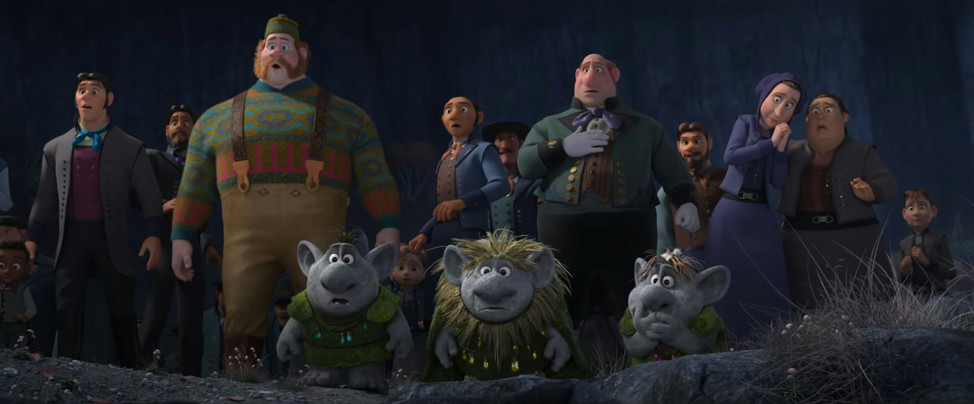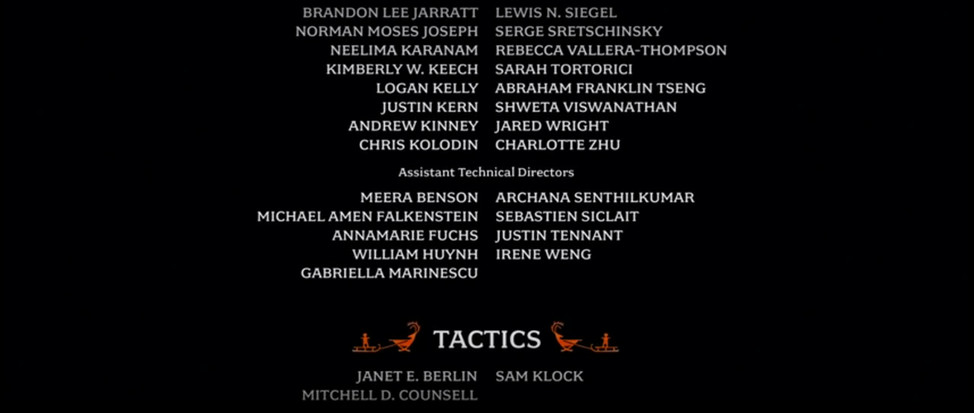
Frozen 2
Walt Disney Animation Studios feature film – worked on crowds pipeline, support & bug fixing, and more as an Assistant Technical Director.
Frozen 2 is the first feature film I’ve had the privilege to work on, and I am immensely proud of what our crew accomplished to produce this stunning visual magic.
On Frozen 2 I worked as an Assistant Technical Director, performing a mixture of scripting, tools development, and problem solving for our artists & their workflows. As a member of the Technical Director department, I represented the intermediate between our artists and software engineers, working as a “steward of the pipeline” to ensure our artists could accomplish their artistic visions with the technology we craft them.
Background
A little context about how I got to work on Frozen 2:
I joined Walt Disney Animation Studios through their Talent Development Program as a Technical Director Trainee in 20181. After 3 months as a trainee, I was cast to Frozen 2 as an Assistant Technical Director and assisted nearly all the production departments on producing and rendering this film.
Besides it being my first film to work on at Walt Disney Animation Studios and my first credit, Frozen 2 holds a particularly special place in my heart for another reason: the first Frozen movie motivated me to enter the computer graphics industry. Specifically, the A Material Point Method for Snow Simulation2 publication from the film’s technical development was a defining point of inspiration during my years as a college student. To have worked on its direct sequel, at the studio that produced it, is a true honor and a highlight of my career.

But enough gushing! Here’s a glance at some of the stuff I worked on for this production:
Crowds (and their luscious locks)
Frozen 2 had a lot of crowd characters, and all of them needed to appear presentable – groomed hair, fitted clothes, the works! Ensuring the best tailored look across all the crowd body types and head shapes was a necessity.
To accomplish this, we used a refitting process that propagated data along our crowd asset hierarchies (described in Luceno Ros et al. 2021, p. 23). I worked on the part of that process that refit the crowd characters’ hair grooms to different head shapes.


Bug fixing & production support
No film ever completes production without some occurrence of technical challenges.
Part of my responsibility on the show was triaging the many issues that arose from artists: Elsa’s hair blowing up, disappearing props and sets, crazy render times, you name it! As an Assistant Technical Director (ATD), the expectation was for me to pick up any issue from any production department and do my best to solve it.
I also had a hand in touching a number of software products and artist tools for bugfixes that came up during production.
Optimizations
The Technical Director teams also share a responsibility of optimizing our shots when needed to get them through the pipeline. Below are a few behind-the-scenes highlights of shots I had a hand in optimizing:
To create the mist at the entrance to the Enchanted Forest, the Effects team first draped a cloth simulation across the scene. The team populated the cloth simulation with thousands of smaller fluid simulations to build movement. #TechTuesday #Frozen2 pic.twitter.com/EwSiB45Cr7
— Disney Animation (@DisneyAnimation) January 22, 2020
Watch how the Lighting and Look Development artists transformed Ahtohallan with their work in #Frozen2. pic.twitter.com/rWJG8K9jHM
— Disney Animation (@DisneyAnimation) July 14, 2020
Related publications
Along with the beautiful artistry crafted for this film, our technical teams went all out to refine our tools and workflows. Here are some publications released by our studio that illustrate the awesome partnerships of art and science on Frozen 2:
-
Frozen 2: Effects Vegetation Pipeline – Norman Moses Joseph, Vijoy Gaddipati, Benjamin Fiske, Marie Tollec, and Tad Miller. 2020. In ACM SIGGRAPH 2020 Talks (SIGGRAPH ’20). Article 7, 1–2.
-
Frozen 2: Creating the Wind Spirit – Cameron Black, Ben Fiske, and Trent Correy. 2020. In ACM SIGGRAPH 2020 Talks (SIGGRAPH ’20). Article 22, 1–2.
-
Making Beautiful Embroidery for Frozen 2 – Ying Liu, Jared Wright, and Alexander Alvarado. 2020. In ACM SIGGRAPH 2020 Talks (SIGGRAPH ’20). Article 73, 1–2.
-
Deconstructing Destruction: Making & Breaking Frozen 2’s Dam – Marie Tollec, Sean Jenkins, Lance Summers, and Charles Cunningham-Scott. 2020. In ACM SIGGRAPH 2020 Talks (SIGGRAPH ’20). Article 24, 1–2.
-
The Look and Lighting of “Show Yourself” from Frozen 2 – Amol Sathe, Lance Summers, Matt Jen-Yuan Chiang, and James Newland. 2020. In ACM SIGGRAPH 2020 Talks (SIGGRAPH ’20). Article 71, 1–2.

All images in this post are courtesy of and the property of Walt Disney Animation Studios.
References
The Trainee & Apprentice Program at Walt Disney Animation Studios is a 9-to-18 month mentored training program for recently graduated/early career artists and technologists. If you’re interested in this opportunity, I recommend checking out “Open Positions” on Disney Animation Careers and look for “Talent Development” roles for your focus of interest.
Alexey Stomakhin, Craig Schroeder, Lawrence Chai, Joseph Teran, and Andrew Selle. 2013. A material point method for snow simulation. ACM Trans. Graph. 32, 4, Article 102 (July 2013), 10 pages. disneyanimation.com
Alberto Luceno Ros, Kristin Chow, Jack Geckler, Norman Moses Joseph, and Nicolas Nghiem. 2021. Populating the World of Kumandra: Animation at Scale for Disney’s “Raya and the Last Dragon”. In ACM SIGGRAPH 2021 Talks (SIGGRAPH ’21). Article 39, 1–2.